L10- Blue Foods 1
Global context-
humans are a coastal species→ 40% of people live within 100km of the coast
marine based food has been an important part of our diets for millennia
traditionally food came from wild capture fisheries but are now increasingly farming species (aquaculture)
food security debates are biased towards terrestrial agriculture
question→ what role can ‘blue food’ play in delivering food security?
Global trends in fish production and consumption:
FAOs SOFIA 2022 report:
Global overview template-
total production from world fisheries→ 110mt in 1990s to 180mt in 2020
total capture fisheries→ stable around 90mt, bigger increase in inland fisheries
4x increase in aquaculture production
most food from aquatic systems are eaten- almost 2x since 1990s, eating more on average per person, beyond increase in human population
fish are important in global trade- increase in exports of huge values
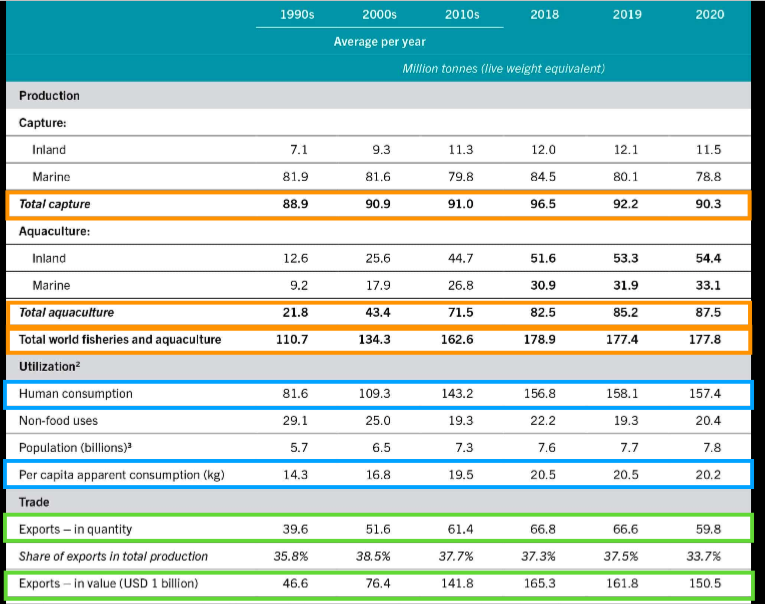
fish for non-direct human use peaked in 1990s and is less now, increase in direct human consumption, increased faster than human population:
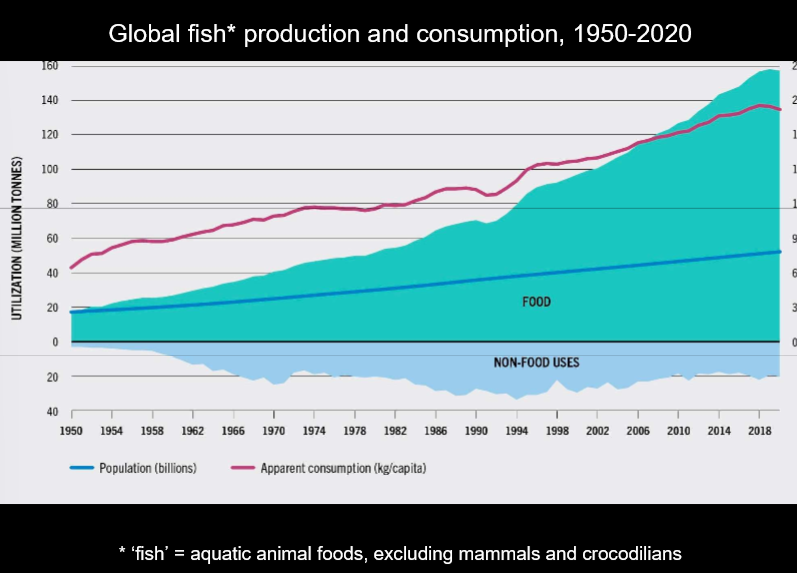
Fish as food-
consume fish nearly 2x as much in 2019 as human population in 1961 (9kg→20kg)
has been observed globally e.g. even in low-income food-deficit countries
rate of protein food increase through fish is higher than all other animal protein foods per year
there is a spatial deficit:
asia, europe and oceania eat more than other continents
different places are eating different kinds of fish
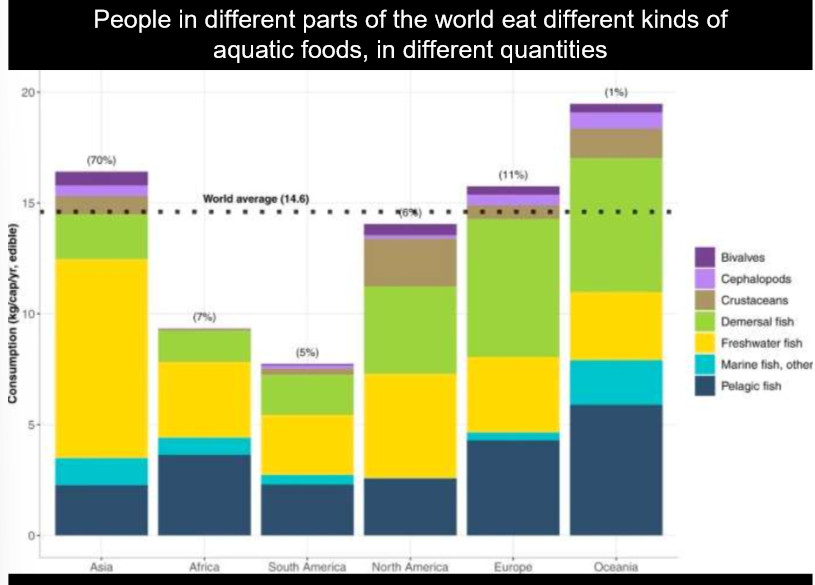
variation within continents too:
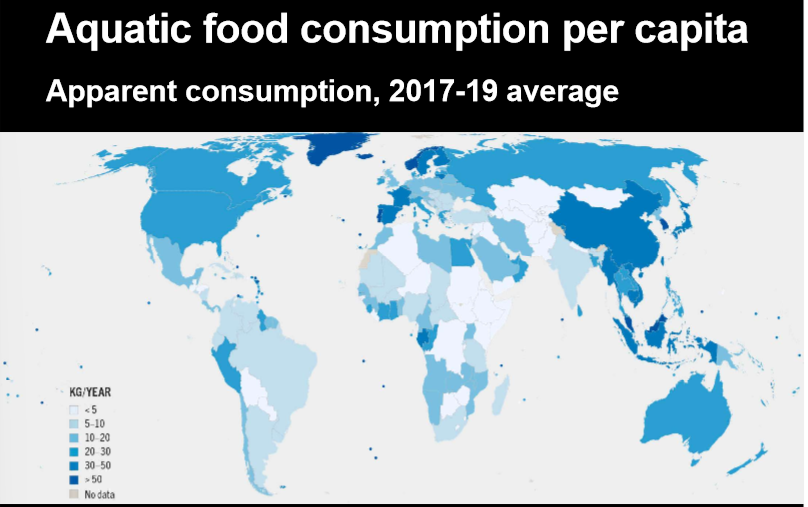
Fish as a product-
11% of world fish production was used for non-food purposes in 2020, 81% of this is used to produce fishmeal and fish oil→ animal feed
are now better at using waste by-products so has decreased since peak in 1960s
mostly use small pelagic fish e.g. sardines
fish oil and fishmeal used to be more in human consumer products e.g. biscuits, but now is more in aquaculture- high demand, more than supply
e.g. West Africa- more catches are made into fishmeal for exports (2 part BBC documentary- impact of these changes)
impacts of aquaculture→ increases pressure on fisheries, impacts food security and livelihoods
Fish as a livelihood-
60m people are employed in this sector, mostly developing countries, small-scale artisanal fisheries, in Asia (84%), employ lots of women
→ is important and diverse
Fish as a commodity-
33% of fisheries/aquaculture were traded internationally in 2020, value of global fish exports is increasing, fish and fishery products trade is nearly equal to all terrestrial meats
general trend of flow of fish from LIC to HIC→ HIC make up 75% of imports
net exporters→ Oceania, LIC of Asia and Latin America
net importers→ Europe, NA, Africa- importing of lower value but more nutritious fish and exporting high value
The rise of aquaculture:
aquaculture was responsible for 49% of global fisheries production in 2020, accounts for 56% of fish for direct human consumption
→ is an increasing, big business
what is being farmed?
variety of fish but all are increasing, mostly inland fish
marine fish aquaculture industry is smaller than wild caught marine fish
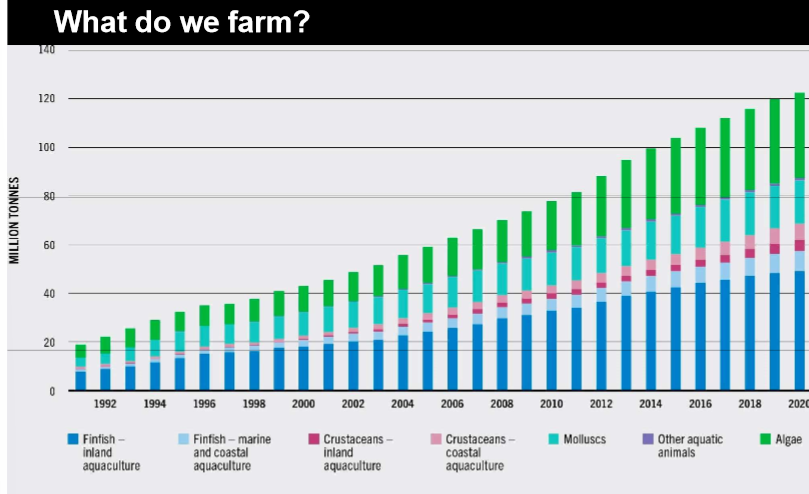
farm nearly 500 species→ diverse farming system
marine and coastal aquaculture (mariculture) is mainly molluscs, with fish and crustaceans
species where aquaculture dominates over wild catching:
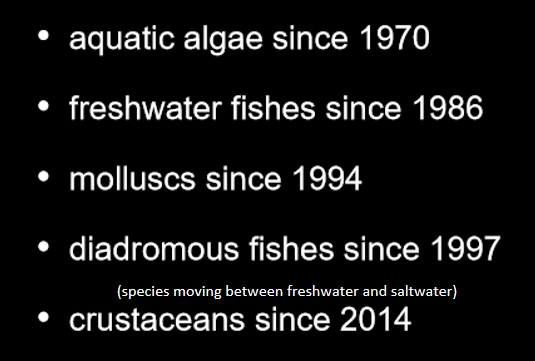
except in saltwater fish, aquaculture is dominant in all fishing catches:
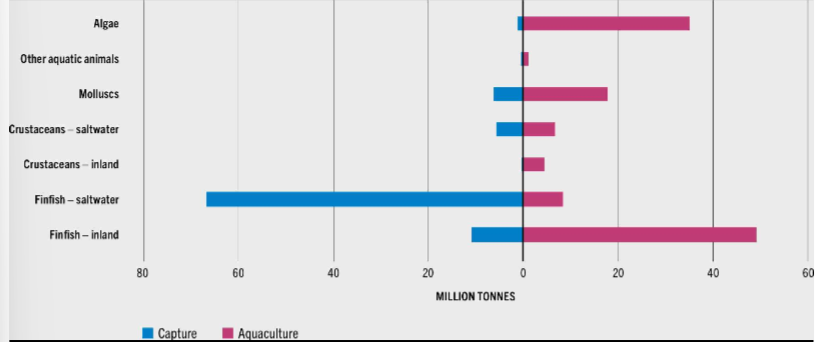
global production→ atlantic salmon (native and non-native areas), prawns, molluscs- oysters and mussels
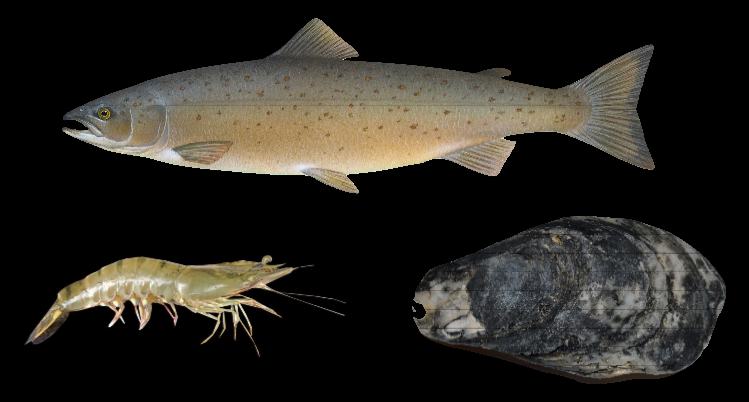
aquaculture is dominated by:
Asia, particularly China, but is increasing worldwide
middle-income countries:
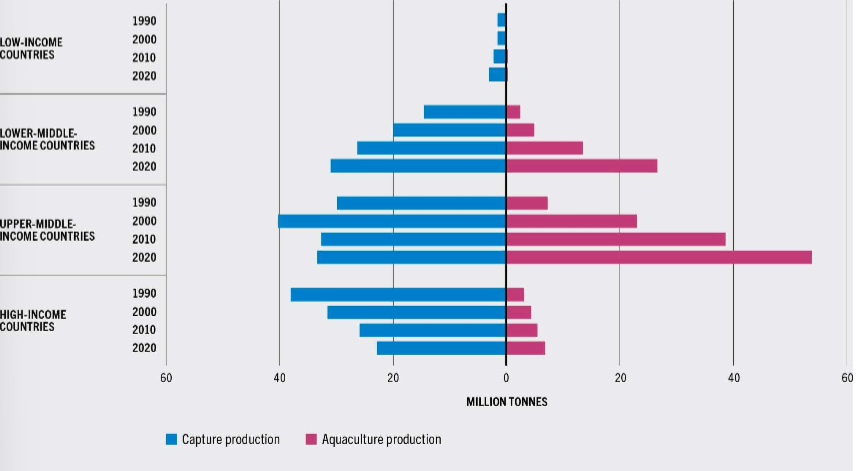
also, capture fisheries are declining in HIC
Blue food and nutrition:
series of articles that show the role that aquatic food may play in global nutrition:

Fish as protein-
fish consumption was 17% of global animal protein intake in 2019
some countries are particularly more reliant on fish consumption e.g. 50% of animal protein intake is from fish in Bangladesh, Cambodia, the Gambia…
general rule that aquatic food is a greater share of animal protein intake in LIC than HIC but there is variability within countries:
general trend of >20% contribution to annual animal protein intake is the tropical regions
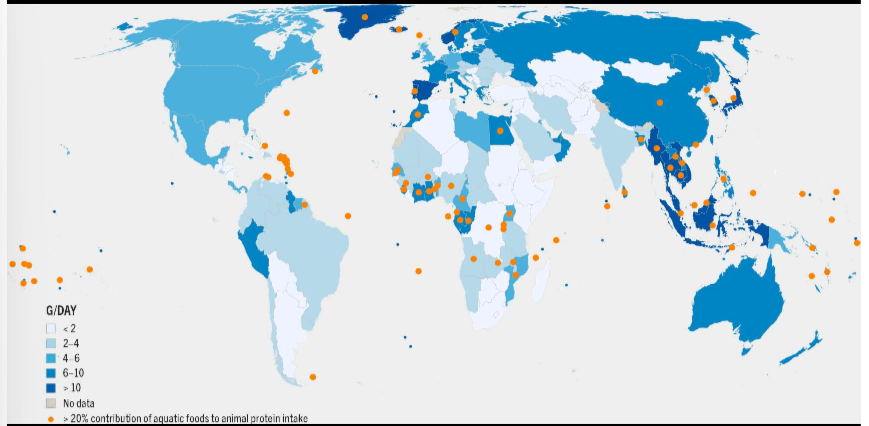
Other ways fish is nutritious:
omega-3 fatty acids
essential amino acids
vitamins (A, B, D)
minerals (iron, calcium, zinc, selenium)
Fish for health-
many LIFDCs/LDCs rely on a narrow selection of plant-based staple food that lacks key nutrients
nearly 2b people lack key micronutrients→ causes 1m premature deaths per year, nearly ½ of deaths of children under 5
fish can directly reduce the malnutrition
nutrient density of terrestrial and aquatic foods, ranked from highest to lowest:
top half is dominated by aquatic foods
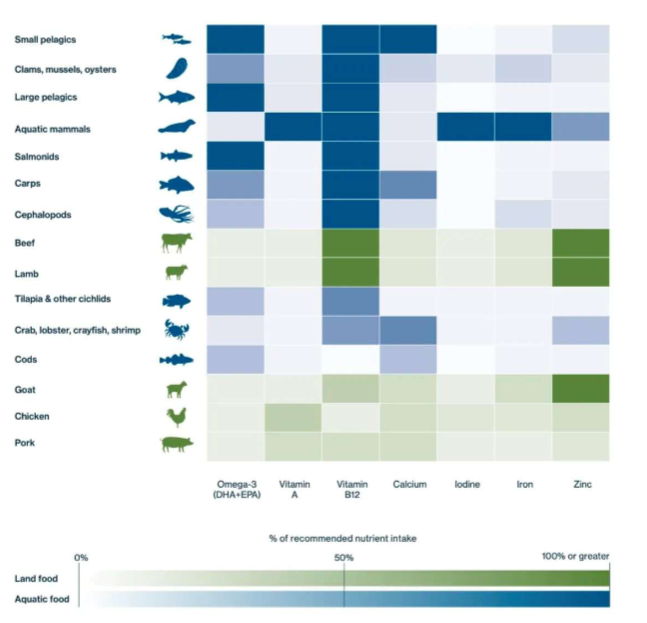
→ aquatic food are important for addressing micronutrient deficiencies
aquatic food can improve human health:
address micronutrient deficiencies
omega-3 fatty acids reduce risk of heart disease
reduce consumption of red/processed meats
Christina Hicks- key in this topic
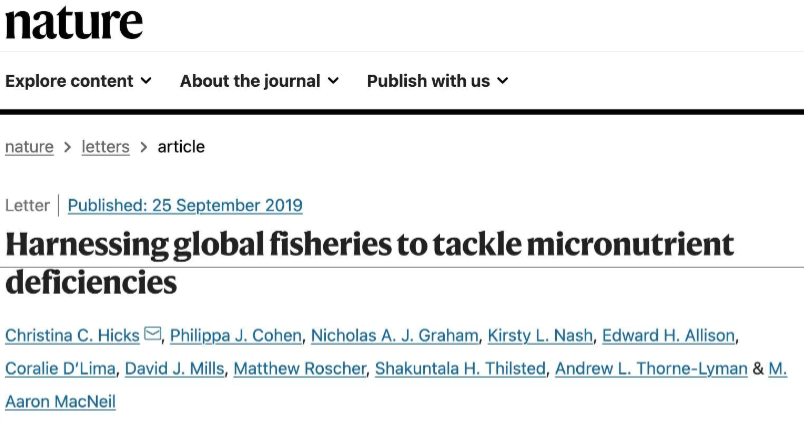
recognised different kinds of fish have different nutrients e.g.
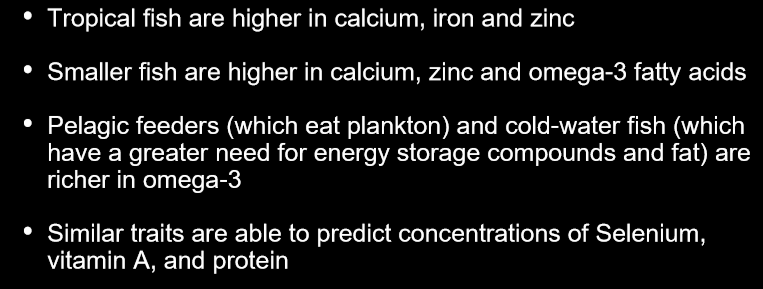
applied this to data on where fisheries are landed:
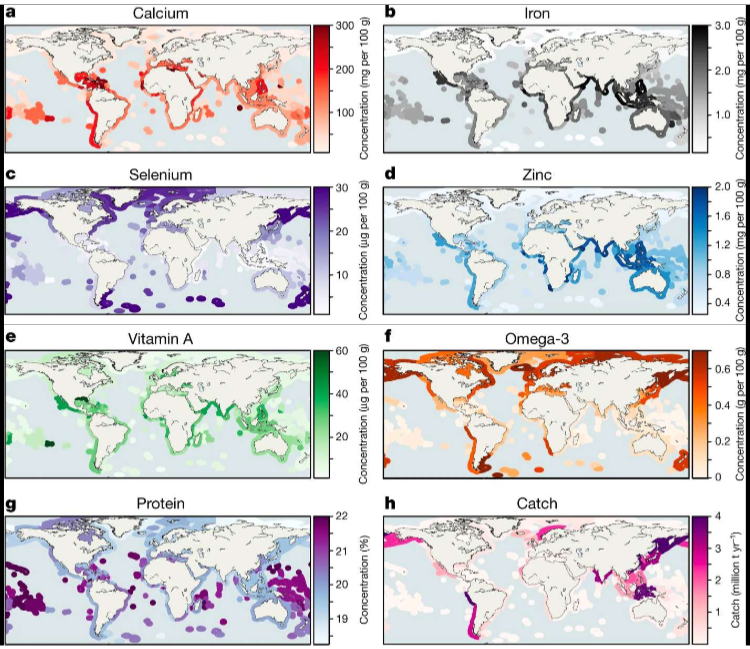
→ gives a potential for marine capture fisheries to close nutrient gap, e.g.:
Africa and Asia at greatest risk of iron and zinc deficiencies but species caught here are high in these
Caribbean has high calcium deficiencies but species caught here are high in this
47% of Namibia have risk of iron deficiency but 9% of species caught in the EEZ would fill requirements for the whole coastal population
82% of Kiribati have risk of calcium deficiency but 1% of fish caught in the EEZ would fill requirements for all children <5
→ many areas have high risks of nutrient deficiency but also have fish that could fill these
role of small-scale fisheries:
use smaller boats, catch to eat or sell in local markets (artisanal)
dominate global fisheries in terms of vessels and employment, especially in LIC
contribution small-scale fisheries make to global nutrition:
there is a band of countries where small-scale fisheries are more important to deliver nutrition (darker red):
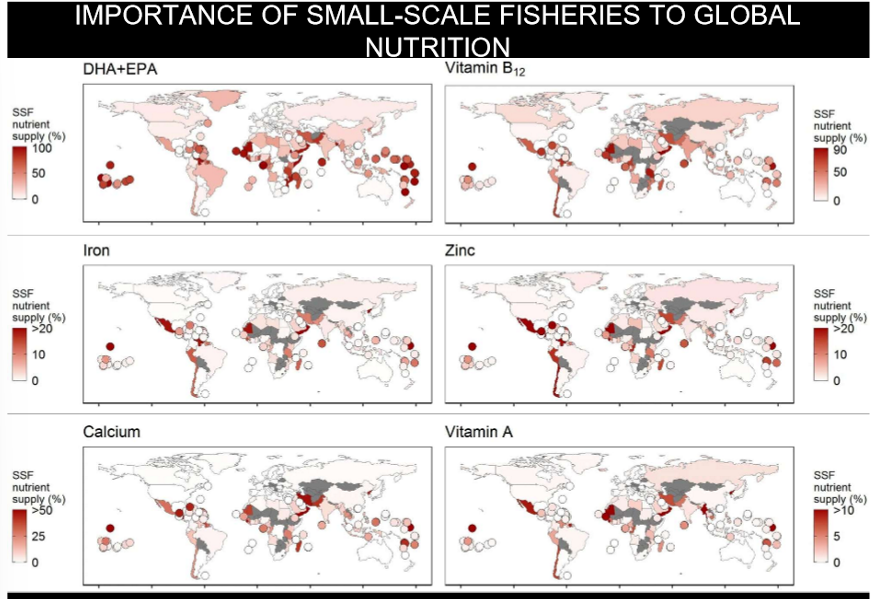
made into a risk map→
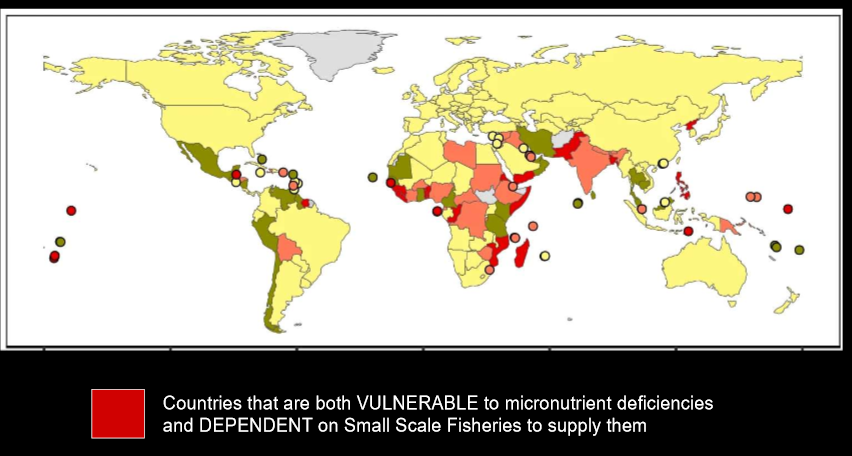
management of small-scale fisheries→ making sure local fisheries are well managed, combine with global policies, ensuring nutrient rich food is available to people that need it, not those that don’t
is a challenge→ complex fisheries supply chain, fish are redistributed around world, foreign fishing fleets, international trade→ are moving nutrient rich fish away from areas where it is needed
there are countries vulnerable to changes in trade and to loss of fisheries-derived nutrients (darker blue)→ increase in fish leaving these countries would have high consequences
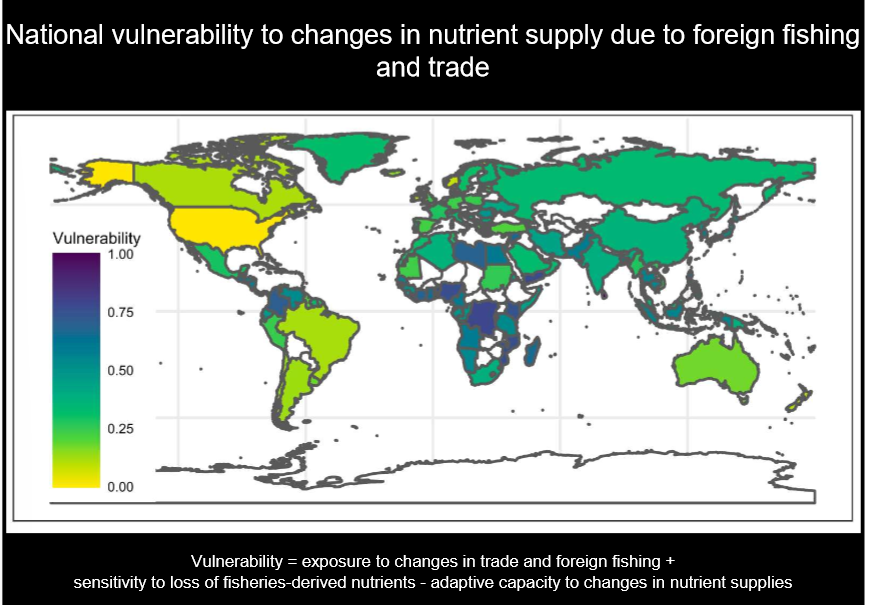
Summary-
Aquatic foods make a huge contribution to global food security, especially in some of the world’s least food secure countries
Wild-caught aquatic foods remain very important, but aquaculture now accounts for nearly half of all aquatic foods
The contribution of fisheries and aquaculture to food security extends beyond calories and protein to encompass a wide range of essential micronutrients
Global trade and fisheries can cause nutrients to be transferred from food insecure to food secure countries